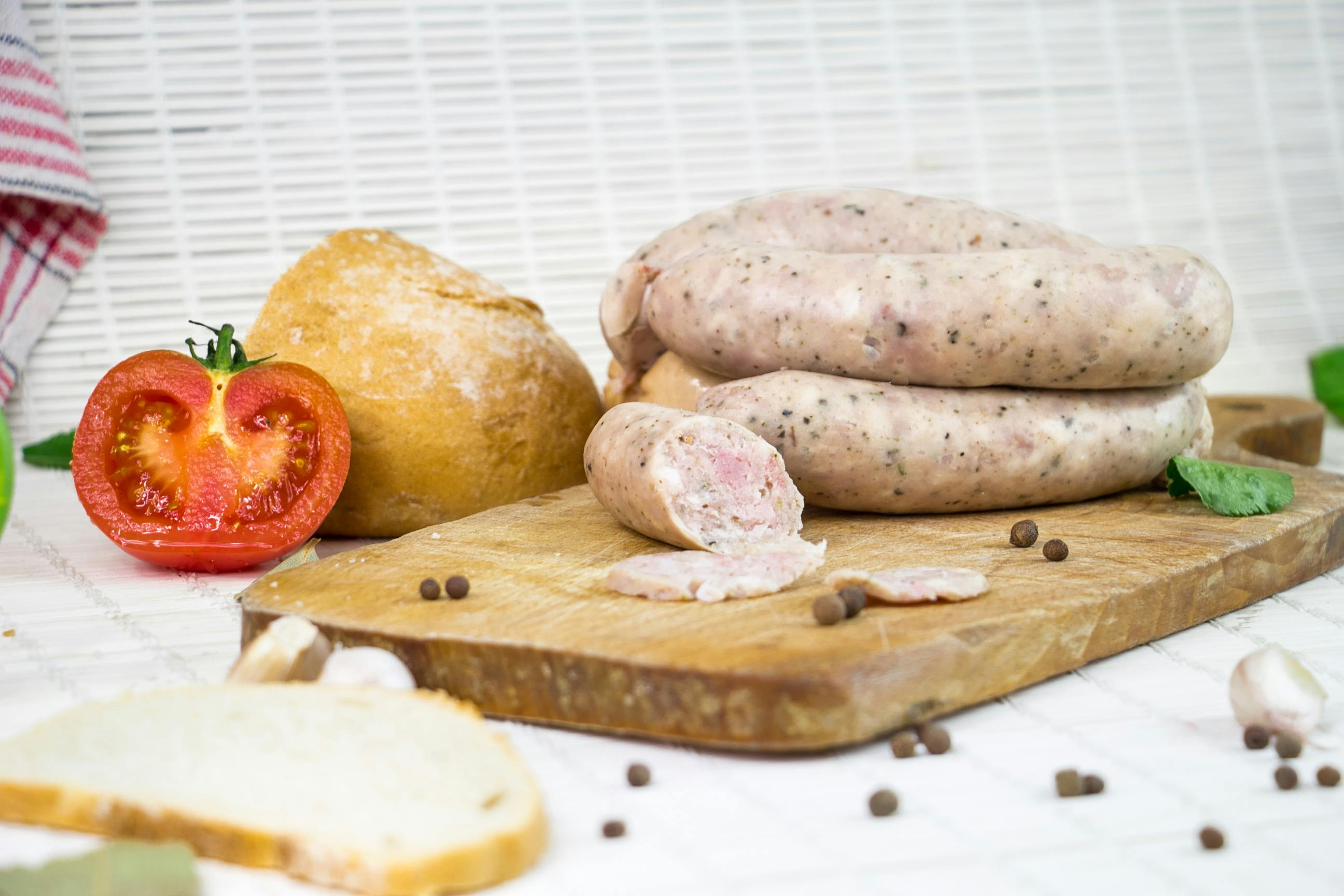Best 5 Foods for a Bland Diet: Simple Choices for 2025

Understanding the Benefits of a Bland Diet
Adopting a bland diet can be essential for individuals with various digestive issues, making it a recommended choice for many health conditions. A bland diet primarily consists of foods that are easy to digest and don’t irritate the gastrointestinal tract. This article provides an overview of the best five foods for a bland diet, emphasizing their importance and offering practical suggestions for meal planning. Whether you’re recovering from surgery or managing gastrointestinal disorders, incorporating these foods can significantly ease discomfort and promote healing.
The benefits of a bland diet extend beyond mere comfort; they also include minimizing digestive distress, promoting optimal absorption of nutrients, and aiding in the recovery process from gastrointestinal illnesses. As we delve into our list, you will find options suitable for various meal types and snack ideas, guiding you through your dietary journey with practical meal preparation tips.
This article outlines simple food choices, essential meal concepts, and expert recommendations to enhance your bland diet menu, illustrating how these foods can form the backbone of your dietary plan.
Top 5 Bland Foods for Your Diet
With a clear understanding of the bland diet's importance and benefits, we can now explore the top five foods recommended for this dietary approach. These foods are not only easy on the stomach but also provide valuable nutrients to support your health journey.
1. White Rice: A Staple for Digestive Health
White rice is an essential part of a bland diet due to its easy digestibility. It’s low in fiber, making it ideal for transitioning your diet during digestive distress. White rice can be prepared in various ways—boiled, steamed, or even as porridge—providing flexibility in meal planning.
Common recipes include:
- Simple steamed rice paired with boiled chicken.
- Rice porridge made by cooking rice with extra water for a soft texture.
- Rice cakes for a light snack option.
Including white rice in meals not only soothes the stomach but also helps bind loose stools, making it beneficial when experiencing diarrhea or gastroenteritis.
2. Bananas: A Nutrient-Dense Snack
Bananas are another excellent choice for a bland diet. This fruit is soft, easy to chew, and packed with potassium—vital for maintaining electrolyte balance, particularly after gastrointestinal upset.
When incorporating bananas, consider these options:
- Mashed banana as a topping for plain rice.
- Banana smoothies blended with lactose-free yogurt for a refreshing treat.
- Dried bananas for a convenient snack option.
Moreover, bananas can help absorb excess stomach acid, contributing to digestive comfort.
3. Plain Yogurt: Probiotic Power
Plain yogurt is a fantastic addition to a bland diet, providing beneficial probiotics that support gut health and digestion. Opt for low-fat varieties that don’t contain added sugars, which can irritate the stomach.
Here are a couple of ways to enjoy yogurt:
- Simple yogurt parfaits layered with mashed fruits like banana or applesauce.
- Yogurt-based smooth blends for a satisfying breakfast.
- Use yogurt in salad dressings to add creaminess without overwhelming flavors.
This friendly food not only assists in digestion but also serves as an excellent source of protein.
4. Mashed Potatoes: Comfort Food Reimagined
Mashed potatoes are often a comforting classic that can be seamlessly incorporated into a bland diet. When peeled and boiled, potatoes are a good source of carbohydrates and can be a filling meal option.
Preparation tips include:
- Using minimal butter or lactose-free milk to create a smooth texture.
- Choosing unseasoned versions for direct consumption.
- Add a pinch of salt if tolerated, to enhance flavor without irritation.
Mashed potatoes provide texture variety and can serve as a base for lean proteins for lunch or dinner.
5. Broth: A Light, Nourishing Option
Broth, particularly chicken or vegetable, is a beneficial addition to a bland diet. It not only hydrates but also supplies essential nutrients without overwhelming the digestive system. It’s especially helpful during a bland diet for those recovering from surgery or experiencing illness.
Broth can be enjoyed in multiple formats:
- Warm broth served with soft-cooked rice or noodles.
- Used as a cooking base for boiling vegetables and grains.
- As part of a comforting soup with simple ingredients.
Broth serves to soothe the stomach while providing important hydration and nutrients.
Creating a Balanced Bland Diet Meal Plan
Now that we’ve reviewed the top five foods for a bland diet, let's discuss practical meal planning ideas. A well-structured meal plan can help maintain nutritional balance while adhering to dietary restrictions.
Incorporate Variety in Meal Choices
Regularly rotating the foods in your bland diet can prevent monotony and ensure you're meeting your nutritional needs. It can be beneficial to include a range of bland ingredients, allowing for flexibility in meal preparation.
Here are some sample meal ideas:
- Breakfast: Oatmeal made with water, topped with mashed banana.
- Lunch: A bowl of chicken broth with soft-cooked rice and mashed potatoes.
- Dinner: Baked fish served with peas and mashed potatoes.
These meals focus on digestive ease while providing necessary nourishment.
Snacking on Bland Foods
Healthy snacks should not be overlooked! Choosing snacks that align with a bland diet can help keep energy levels stable throughout the day.
Consider these snack options:
- Applesauce for a sweet, easy-to-digest option.
- Certain rice crackers paired with plain yogurt.
- Mashed avocado on soft bread for a nutrient-rich bite.
Snacks should complement your meal plan, ensuring you don’t experience hunger while managing dietary restrictions.
Expert Tips for Managing a Bland Diet
To successfully navigate a bland diet, it's crucial to keep a few key tips in mind:
- Stay hydrated by drinking plenty of water or clear fluids.
- Avoid high-fiber foods during acute illness or recovery stages.
- Monitor your body's reactions to specific foods to modify your diet gradually.
Being mindful of your body's signals can inform what to include or avoid, tailoring your diet to suit your digestive comfort.
Foods to Avoid on a Bland Diet
Recognizing what not to eat is as important as knowing what to include. Certain foods can exacerbate symptoms or lead to discomfort when following a bland diet.
Irritating Foods to Steer Clear Of
Spicy foods, high-fat items, and heavy seasonings should be strictly avoided, as they can trigger digestive upset. Be cautious with:
- Fried foods and oily dishes.
- Spices such as pepper and chili.
- Raw vegetables or fruits with tough skins.
Focusing on simple ingredients minimizes risk while supporting digestive health.
Common Misconceptions About Bland Diets
There is often confusion surrounding the bland diet, particularly concerning its perceived restrictions. It’s essential to clarify:
- A bland diet can be nutritious when structured properly.
- It does not imply completely eliminating all favorite foods; rather, it's about moderation and preparation.
- Adjustments can be made based on individual tolerance levels.
By understanding these aspects, one can approach a bland diet with an informed mindset, allowing for better adherence and outcomes.
Q&A: Common Questions About Bland Diets
As with any dietary adjustment, questions often arise when considering a bland diet. Here’s a look at some common inquiries:
What are the primary reasons to follow a bland diet?
A bland diet is beneficial for managing symptoms of gastrointestinal disorders, speeding recovery after surgery, and providing nutritional support for sensitive stomachs. The focus is on ease of digestion and comfort.
How long should I maintain a bland diet?
The duration varies based on individual need; typically, it’s advisable to continue until symptoms alleviate or as advised by a healthcare professional. Gradually reintroducing foods can help determine tolerance levels.
Can children follow a bland diet?
Yes, bland diets can be adapted for children, particularly when addressing sensitive stomachs or post-surgery recovery. It’s best to keep meal variety while prioritizing soft, digestible foods.
Are there any recipes specifically designed for a bland diet?
Absolutely! Many recipes focus on soft, simple ingredients, such as plain baked potatoes, boiled chicken, or simple smoothies. These options ensure both nutrition and digestibility.
What are some practical ways to incorporate more bland foods into my diet?
Consider meal prepping bland foods in larger batches to ensure you always have options available. Planning your grocery list around bland staples can also facilitate adherence to dietary recommendations.

